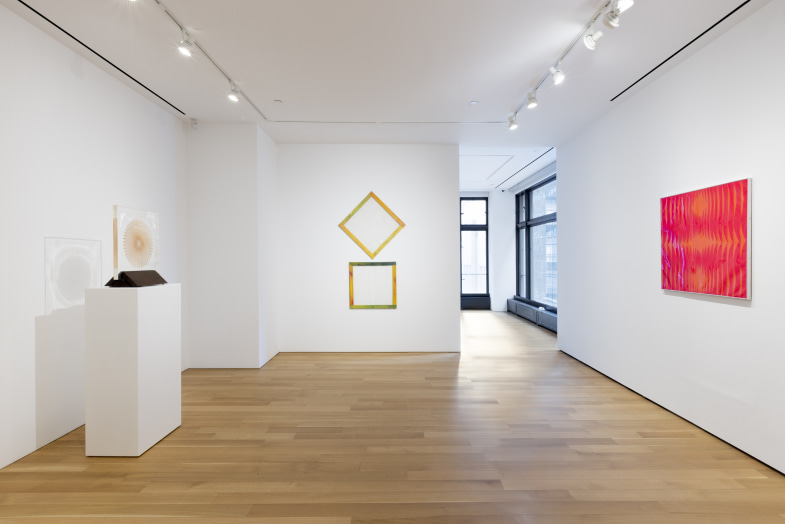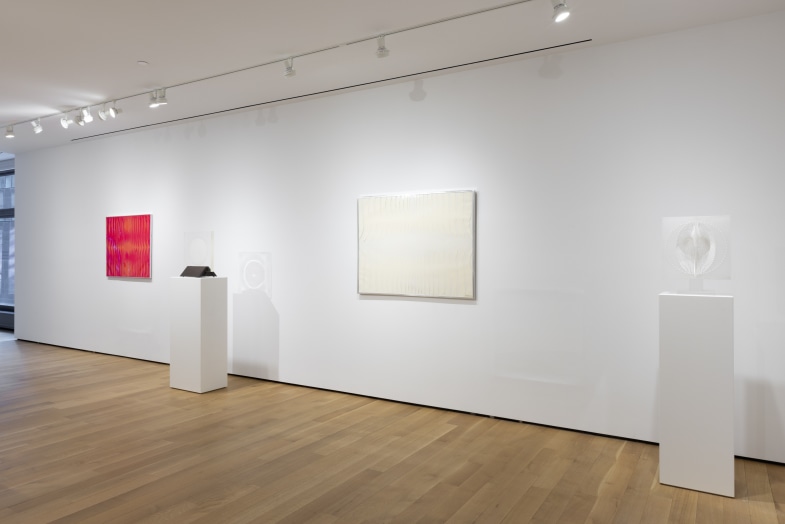Luxembourg + Co., New York, announces the opening of Plastic Revolution, an exhibition dedicated to material and technological innovation in the work of Carla Accardi (1924-2014) and Sue Fuller (1914-2006) and accompanied by a short film of Alain Resnais (1922-2014).
In 1958 the avant-garde filmmaker Alain Resnais (1922-2014) was commissioned by a French industrial group to direct a short documentary about the production of plastic goods. Mesmerized by the material’s seemingly alchemical production process, Resnais’ film – titled Le Chant du Styrène (The Song of Styren) – was set to trace the transformation of granular chemical matter into smooth and brightly colored everyday artefacts. The outcome, however, did not conform to mere documentation. Resnais’ poetic angle in the film – as well as the commentary written by Raymond Queneau for the voiceover – exposed an overlap be-tween aesthetic, technological and scientific innovation, echoing a growing tendency in art to adopt plastic as the new medium of the post-war era.
Taking its cue from Le Chant du Styrène, the exhibition Plastic Revolution returns to a critical junction in the history of this important and today also controversial material, inquiring what were the formal, textural and ideological qualities that made plastic so important to art in this specific moment in time. The display focuses on the work of two protagonists: the Italian artist Carla Accardi (1924-2014) and the American Sue Fuller (1914-2006). Albeit unknown to one another, both Accardi and Fuller dedicated their practice to rigorous material research into the transparent qualities of synthetic surfaces intended for in- dustrial production in mass quantities.
As a result, the two came to master the use of materials such as Sicofoil (Accardi) and Lucite (Fuller) which enabled a vital rejection of the impressionable canvas as the principal support for painterly practices. Seen today, both Fuller and Accardi’s work still continue to challenge gendered distinctions between craft and engineering, painting and chemistry, as well as decorative and fine arts.


